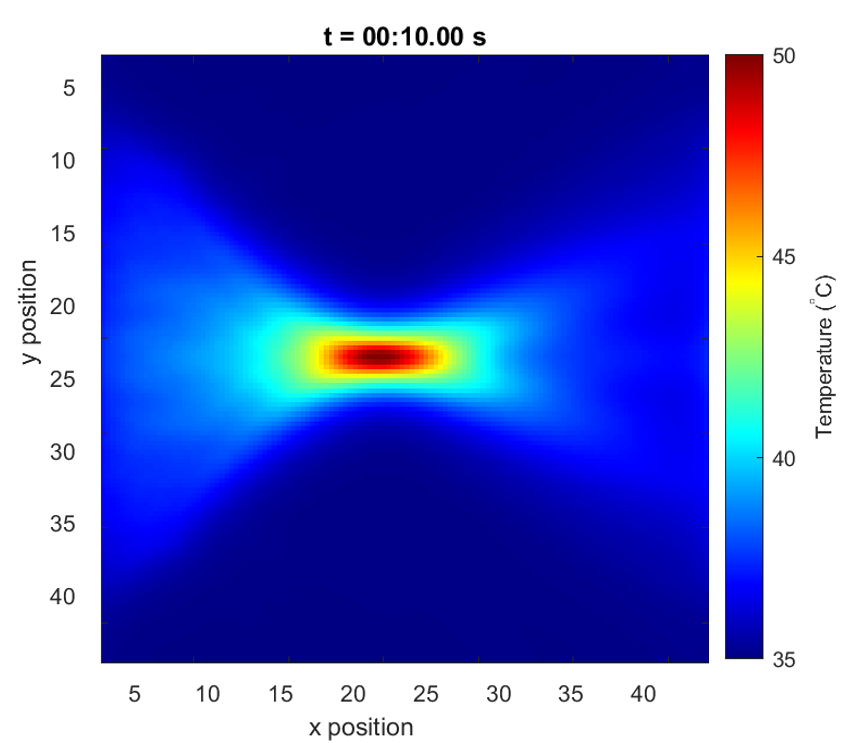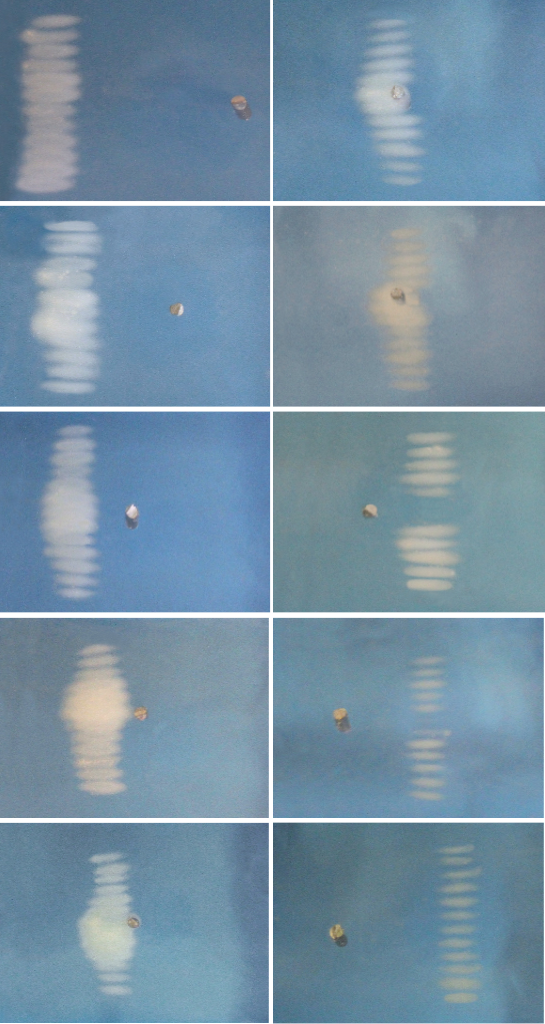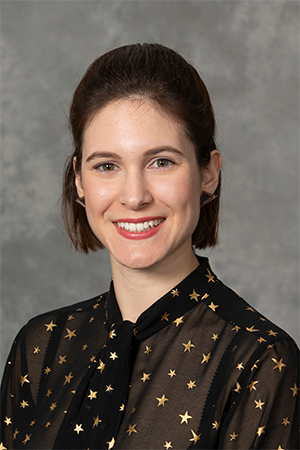Marina Bakaric
| Position: | PhD Student |
|---|---|
| Email: | marina.bakaric.16@ucl.ac.uk |
| Phone: | +44 (0) 20 7679 2329 |
| Extension: | 32329 |
| Room: | Malet Place Engineering Building, 3.18 |
| Address: | Department of Medical Physics and Biomedical Engineering University College London Malet Place Engineering Building Gower Street, London, WC1E 6BT |
About
Short Bio
I started my university education striving towards optics and materials science, but along the way found what I really wanted was to aim and contribute to further development in medicine, especially cancer treatment. After graduating from my BSc in Physics, I enrolled to MSc in Radiation Physics to gain a wider knowledge of the area, followed by MPhil/PhD in Medical Physics which I am currently doing as a part of Biomedical Ultrasound Group at UCL.
My research project is metrology-oriented and focuses on a wide range of subjects related to temperature measurements, ranging from developing tissue-mimicking materials to assess heating induced by high-intensity focused ultrasound, ultrasound transducer performance and photoacoustic thermometry.

Current work
Characterising HIFU sources using photoacoustic thermometry
High intensity focused ultrasound (HIFU) is a non-invasive thermal therapy during which a focused ultrasound beam is used to destroy cells within a confined volume of tissue. Due to its increased use and advancements in treatment delivery, various numerical models are being developed for use in treatment planning software. In order to validate these models, as well as to perform routine quality checks and transducer characterisation, a temperature monitoring technique capable of accurately mapping the temperature rise induced is necessary.
Photoacoustic thermometry is a rapidly emerging technique for non-invasive temperature monitoring, where the temperature dependence of the Grüneisen parameter leads to changes in the recorded photoacoustic signal amplitude with temperature. In order to use this technique to assess heating induced by HIFU in a metrology setting, a suitable test material must first be selected that exhibits an increase in the generated photoacoustic signal with temperature.
This project focuses on the development of a tissue-mimicking material suitable for HIFU applications and photoacoustic thermometry. The experimental setup below was designed in order to enable temperature-dependent material characterisation, namely their Grüneisen parameter, optical absorption coefficient and speed of sound.

Education
MPhil/PhD (Jan 2018 – To Date) Expected Dec 2021
Medical Physics and Bioengineering, Department of Medical Physics and Biomedical Engineering, University College London
MSc (Distinction) (2016 – 2017)
Radiation Physics, Department of Medical Physics and Biomedical Engineering, University College London
BSc (Cum Laude Distinction) (2013 – 2016)
Physics, Department of Physics, University of Rijeka, Croatia
Previous Projects
Temperature-dependent output of lead zirconate titanate transducers
The effect of temperature on the output of lead zirconate titanate (PZT) transducers is of particular interest in ultrasound metrology, as well as medical ultrasound applications in order to ensure safety during both imaging and therapy.
In this work, the temperature-dependent output of PZT transducers immersed in water was investigated between 22 °C and 46 °C.
- The output of the 2.25 MHz transducer when driven by continuous wave (CW) or quasi-CW excitation at the transducer centre frequency using an impedance-matched signal generator and amplifier was investigated using two independent methods, namely radiation force measurements and laser vibrometry. The pressure radiated from the transducer increased in both measurements, on average by 0.70 % per degree Celsius.
- The efficiency of the 2.25 MHz transducer was investigated by measuring the electrical input to the transducer and its impedance as a function of temperature. Given a constant drive voltage, the transducer resistance increased by 9 % within the temperature range from 22 °C to 46 °C, while the efficiency increased by 1 % per degree Celsius.
- The effect of the driving conditions on output of the 1 MHz and 2.25 MHz transducers was investigated using laser vibrometry. Three driving conditions were assessed: an impedance match signal generator and amplifier using (1) single cycle or (2) quasi-CW excitation, and (3) a pulser providing a source for broadband excitation. The single cycle and quasi-CW measurements showed the same trends as the radiation force measurements,
however, the pulsed-wave excitation showed a more sporadic response which is hypothesised to be related to the matching of the electrical impedance between the pulser and transducer.
Overall, the output of the two PZT transducers was seen to increase with temperature over the measurement range. Accounting for these differences is important for many areas of ultrasound metrology, for example, therapeutic ultrasound where a coupling fluid at an elevated or decreased temperature is often used.

Experimental study of beam distortion due to fiducial markers during salvage HIFU in the prostate
In this study, I experimentally investigated the effect of a single EBRT fiducial marker on the efficacy of HIFU treatment delivery using a newly developed tissue-mimicking material based on a polyacrylamide hydrogel containing bovine serum albumin. The study has shown that the presence of a marker may result in an undertreated region beyond the marker due to reduced energy arriving at the focus, and an overtreated region in front of the marker due to reflections.
The figure is showing lesions produced in BSA PAG phantoms after raster scanning the transducer with the focus positioned in front of the marker (first column) resulting in an increase of the ablated volume, and behind the marker (second column) showing a decrease in the ablated volume, with a noticeable gap distal to the marker.

Journal Publications
| 1. | Characterisation of hydrophone sensitivity with temperature using a broadband laser-generated ultrasound source Journal Article In: Metrologia, 60 (5), pp. 055002, 2023. |
| 2. | Measurement of the ultrasound attenuation and dispersion in 3D-printed photopolymer materials from 1 to 3.5 MHz Journal Article In: J. Acoust. Soc. Am., 150 (4), pp. 2798-2805, 2021. |
| 3. | Measurement of the temperature-dependent output of lead zirconate titanate transducers Journal Article In: Ultrasonics, 114 , pp. 106378, 2021. |
| 4. | The effect of curing temperature and time on the acoustic and optical properties of PVCP Journal Article In: IEEE Trans. Ultrason. Ferroelectr. Freq. Control, 67 (3), pp. 505-512, 2020. |
| 5. | Experimental study of beam distortion due to fiducial markers during salvage HIFU in the prostate Journal Article In: Journal of Therapeutic Ultrasound, 6 (1), pp. 1-12, 2018. |
Conference Publications
| 1. | Test materials for characterising heating from HIFU devices using photoacoustic thermometry Conference Proc. SPIE, Photons Plus Ultrasound: Imaging and Sensing 2020, 11240 , 2020. |
| 2. | IEEE International Ultrasonics Symposium, 2019. |

